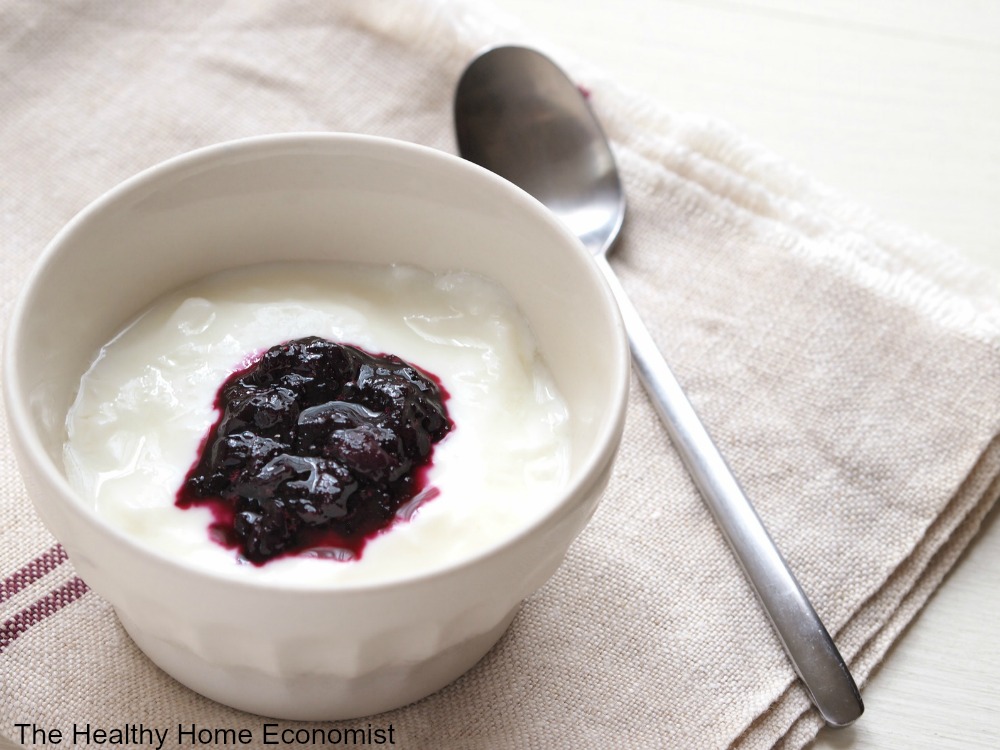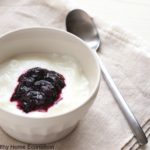 If you’ve watched even one of the videos from the 100+ Real Food video library available on this blog, you probably know that I have a microwave in my kitchen.
If you’ve watched even one of the videos from the 100+ Real Food video library available on this blog, you probably know that I have a microwave in my kitchen.
Do I use it for cooking or heating anything that my family consumes?
No. I haven’t used a microwave to heat or cook anything in many, many years. I much prefer my small countertop convection oven which doesn’t heat food unnaturally and creates carcinogens like a microwave does.
Why don’t I just remove the microwave from my kitchen then? The truth is that the microwave can function as a handy airtight cupboard and proves quite useful for other tasks besides cooking and heating believe it or not.
I mentioned in one of my Real Food videos that I frequently use it for airtight, room temperature storage of freshly baked bread, cookies, and other baked goods.
It also works very well for making homemade raw yogurt. It is, of course, made from unpasteurized milk.
What about Greek yogurt? Is Greek yogurt better? How about the similar German style cheesy yogurt known as Quark? While not necessarily healthier, if you make it yourself allowing sufficient time for probiotic inoculation, these are certainly a nutritious choice! It is ultimately a personal preference as long as the yogurt is fermented properly.
If you don’t have access to raw yogurt, whether regular or Greek, then you don’t know what you’re missing. Pasteurized yogurt even if organic pales in comparison to the digestibility and nutrient value of raw yogurt, so if you are able to snag some raw milk from a local farm, here’s how to make it into raw yogurt.
While the recipe below works fine using the microwave as the incubator, yogurt made in a slow cooker is more dependable in texture.
*This helpful recipe idea was given to me by my friend Cynthia Calisch, who has passed away. May she rest in peace.

Raw Yogurt Recipe
How to make raw yogurt using the microwave as the perfect incubation unit (turned off). When raw, yogurt has a pleasant drinkable style texture compared with scoopable heated yogurt.
Ingredients
- 1/4 cup Plain, whole milk yogurt preferably organic and grass-fed
- 3 3/4 cups Raw cow or goat milk preferably grass-fed
Instructions
-
Scoop 1/4 cup of the plain whole milk yogurt into a clean, wide mouth, glass mason jar (I like these). After you've made raw yogurt one time, you can use your own raw yogurt as the starter for subsequent batches.
-
Warm the raw milk on the stove to between 105 - 117F. No enzymes or nutrition is lost heating to this temperature but the warmed milk enables the yogurt culture to "take" better than room temperature raw milk.
-
Pour about half a cup of the warmed milk into the mason jar and mix with the yogurt.
-
Pour the remaining warmed milk into the mason jar, stir and close the lid tightly.
-
Wrap the mason jar in a thick hand towel, secure with a rubber band and place inside your microwave closing the door. Leave the light in the microwave on to keep a bit of warmth inside.
-
In 24 hours, open the microwave and voila! You will have yourself a lovely quart of raw yogurt!
More Information








I removed the whey. Can I still make yogart with the wheyless milk?
I just made a batch in mine! Delicious!!
Bailey,
I make my yogurt in a cube dehydrator often. I use about 110-degrees.
Can you use a food dehydrator with the trays removed on the lowest temp setting of 105*?
I haven’t tried it, but it probably would work fine.
Is plain Fage greek yogurt okay to use. I’ve never made homemade yogurt before and Fage is all I have on hand.. =)
I made this and it turned out great! I found an interesting way to keep it warm without heating the milk at all. On hot days, the temperature of my attic is in the 90s, and is the perfect place to incubate milk for yogurt and clabber!
I have been making my own yogurt for months now. In my experience, the LESS yogurt culture you use, the thicker your yogurt will be. I am now using just a few teaspoons of yogurt to about a gallon of milk, and the final product can be held upside down with the lid off. It is thick, creamy, and delicious. (I am actually eating some right now.)
I have never posted a comment on a blog before, but I wanted to share that there really is a huge difference in your finished product depending on the amount of yogurt you use to culture with. I am not sure if this is allowed, but here is a link to the blog that convinced me that LESS is better:
I saw someone else mention this, but I do our yogurt in the crockpot. It is so simple to do and makes quite a bit for my brood of growing kids. I have a yogurt maker, and while it’s cute and helpful to have little containers, it just hasn’t been practical for 5 kids all wanting yogurt at the same time. Using the crockpot, I tend to be able to make 2-3 quarts at a time. I warm the milk up on the stove, while turning my crockpot on warm, just to get the bowl comfortable for the good bugs 🙂 Then after I inoculate the milk, I take the crock out of the warmer, put it on a large towel and pour the milk into it. I put the lid on, cover the whole thing with the towel, and place it in my oven, with the light on. I leave anywhere from 8-24 hours. If I plan right, 24 is the best…tart and tangy, but easy to digest.
I’m sure if anyone said this yet (don’t have time to read all the comments) but yogurt can also be incubated in a cooler. I usually do two gallons at a time and incubate in a large cooler. I fill up the empty spaces with more jars of hot water and cover it all with a large towel.
Hi Sarah
I am using my dehydrator for the incubation period. Please specify the temp for the 24hr incubation since I haven’t owned a microwave in years and want to get that temp right.
Thanks a bunch, Renee